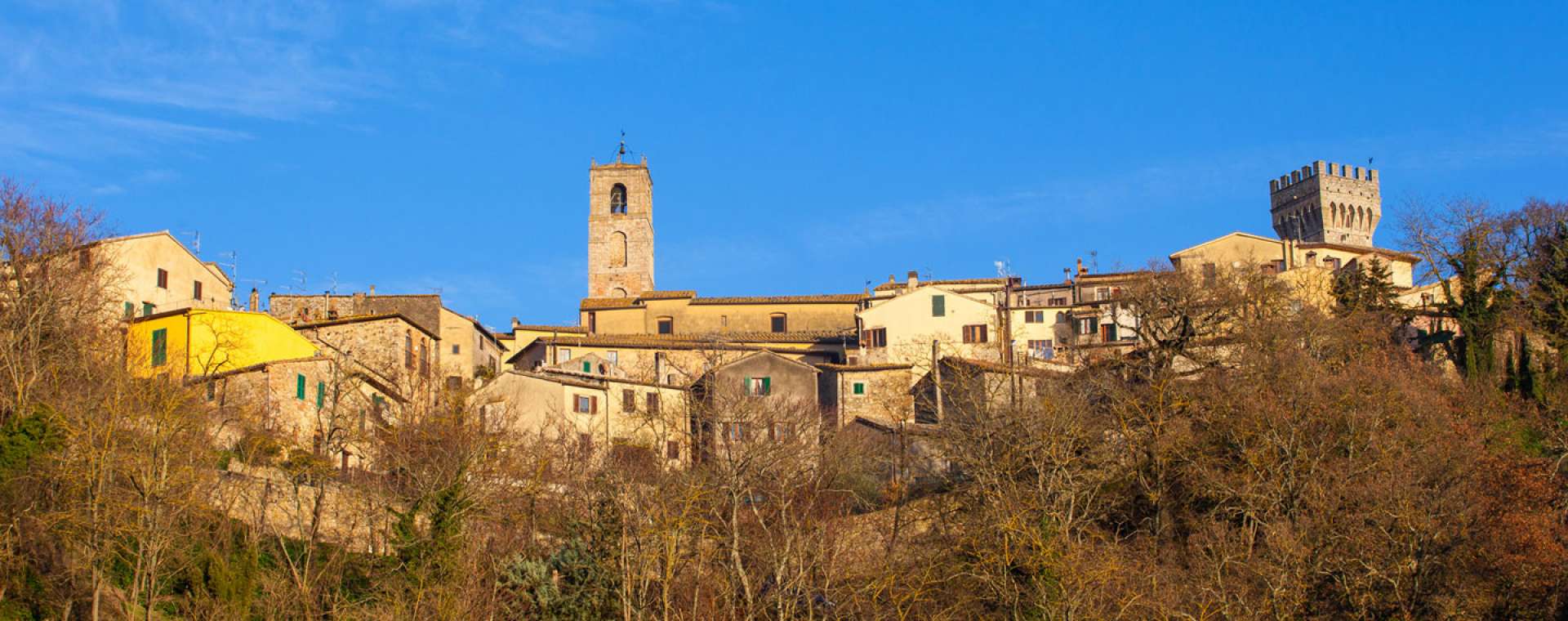San Casciano Val di Pesa travel guide
Around 10 miles south of Florence, San Casciano Val di Pesa is the principal town of the Pesa Valley and one of the major centres of the wider Florentine Chianti.
A tight ring of 14th-century walls encloses its small historic centre, where churches and a small museum house art treasures created when San Casciano’s importance as a fiefdom of Florence was growing from the mid-1300s.
Its modern suburbs are less interesting, but do at least have a good-sized Coop supermarket — not easy to find in the tiny wine towns of the Chianti hills.
In the Beginning…
The commune was properly established in the 1200s — before then, San Casciano was no more than a hamlet. It rose to prominence when it was fortified by Walter VI, Duke of Athens, a short-lived despotic ruler of Florence in the 1340s.
A strategic location on a bluff high above the River Pesa, and at the junction of several roads at the southern gateway to Florence, brought San Casciano into the pages of military history on a regular basis. In the early 1300s it was occupied and destroyed by Holy Roman Emperor Henry VII and within a decade also burned to the ground by legendary Duke of Lucca, Castruccio Castracani. In 1354, French mercenary Fra Moriale ransomed San Casciano for 16,000 Florins. It was heavily damaged again during World War II, before being liberated by New Zealand forces in July 1944.
The town has historic links with Niccolò Machiavelli, Renaissance republican, historian, philosopher and author of “The Prince”, a Realpolitik manual for winning and holding power that’s still read over 5 centuries later. He wrote it after his exile from Florence to nearby Sant’Andrea in Percussina in 1513; San Casciano’s liveliest street is named after him.
South-east of San Casciano, the road to Mercatale and Le Quattro Strade is a short, pretty drive through classic Chianti countryside
Visit This
San Casciano’s most precious artworks are displayed in the Museo Giuliano Ghelli, which inhabits the church of Santa Maria del Suffragio and a former convent next door. Opening hours can be a bit erratic, but it’s well worth checking, especially if you are interested in Tuscan art from the 1200s and 1300s — i.e. before the Renaissance.
The main room has outstanding examples of tempera painting, a technique using pigments mixed with egg yolk which was the main method in Tuscany before oil painting took over. Star names on show are Coppo di Marcovaldo (c. 1225–76) and Ambrogio Lorenzetti (c. 1290–1348), from Florence and Siena respectively
The museum also exhibits a huge sandstone stele dating to the 7th century BC. Dug up in an olive grove in 1978, it was part of an Etruscan tomb. San Casciano was probably the most important settlement for miles around in the early Etruscan period.
The little church of the Misericordia (aka Santa Maria del Prato) dates to the early 14th century, though it was heavily restored in the 18th and again after major World War II damage. Significant older parts remain intact, including a carved marble pulpit and a sinuous Crucifix attributed to the great Sienese painter Simone Martini. This may be the last work he completed in Italy, before he left for Avignon around 1325.
Outside the walls beside the 15th-century church of San Francesco is a 33m/108-ft. steel water tower, the Torre dell’Aqua (or Torre del Chianti), open as a viewing platform (usually Friday to Monday only). You can see the Chianti, Florence and Siena; the hills around Pistoia and Pisa; and even as far as the Tyrrhenian Sea on a clear day.
On a hillock above an olive grove about a mile outside town, the church of Santa Cecilia a Decimo is well over 1,000 years old (though the oldest bits of the current structure date to the 1100s). Inside, beyond its handsome portico, is art by Florentine painter Cenni di Francesco (1370–1415), whose most famous frescoes are in Volterra.
Eat & Drink This
Despite its charms, not too many tourists come to San Casciano — its streets are usually busy with locals going about their daily business. This is a working Tuscan town, and its rustic restaurants and trattorias are a good place to taste traditional flavours at local-oriented prices.
The heart of the old centre — Via IV Novembre, Via Machiavelli and the clock tower at Piazza Pierozzi where they meet — has a selection, including the Cantinetta del Nonno and Osteria Caffè del Popolano, as well as street cafes and well-stocked wine shops.
At Sant’Andrea in Percussina, Machiavelli’s former estate houses a renowned fine dining restaurant, the Albergaccio dal 1450.
Out of Town: A Glorious Drive
South-east of San Casciano, the SP92 road to Mercatale and Le Quattro Strade is a short, incredibly pretty drive through classic Chianti countryside: olive groves, views over miles of rolling vineyards and a landscape dotted with stone case coloniche, the traditional farmhouses of Tuscan sharecroppers.
Three Excursions from San Casciano
- Florence: it’s close, easy to reach by bus or car, and has enough art and culture to keep you busy for a year
- San Gimignano: a preserved Gothic town with hidden alleys, medieval stone towers and a museum and church with fine painting and sculpture
- Impruneta: Chianti’s terracotta centre has craft workshops, a formidable basilica and a busy autumn festival schedule
